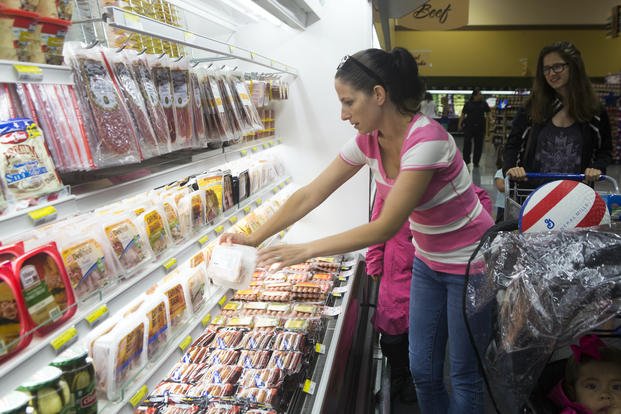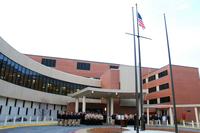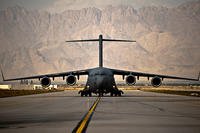Food stamps and other food assistance programs can help low income Americans -- including military members -- buy food.
The food stamp program, known as the Supplemental Nutrition Assistance Program (SNAP), and the Special Supplemental Nutrition Program for Women, Infants, and Children, known as WIC, are both administered by the Department of Agriculture.
WIC and food stamp vouchers can be used at both on-base commissary and Exchange stores and at off-base markets.
Families with children may also qualify for a free and reduced lunch program on or off base. Families whose household income is below 130% of the poverty line, an amount that varies by location, might qualify for the military's Basic Needs Allowance.
Food Stamps and Military Families
Military members stationed in the U.S. can apply for food stamps at their local SNAP office. Although SNAP benefits are administered by each state, the USDA can help you find your nearest office. Some states may also allow you to apply online. Visit the USDA website for a link for your state's office and rules.
To be eligible for food stamps, military families must meet certain income requirements. Although combat pay, hostile fire pay and imminent danger pay aren't counted as part of that income, all other pay, including Basic Allowance for Housing, is.
Related: Use this Military.com calculator to figure out your pay.
That means that while your family may qualify to receive SNAP in a low cost of living area where your BAH payment is relatively small, you may not qualify in a high cost of living area where your BAH payment is much larger.
Anti-hunger advocates are hoping legislation will fix this issue and place BAH on the list of pay that is not counted as SNAP income.
How many military families use SNAP benefits is notoriously difficult to track. The most recent data shows that about 22,000 active-duty troops used food stamps in 2019, the most recent year for which such data was available.
Special Supplemental Nutrition Program for Women, Infants and Children (WIC)
Qualifying military families can also apply for the Special Supplemental Nutrition Program for Women, Infants, and Children, known as WIC. WIC helps low-income families with pregnant moms or children up to age five by providing vouchers for healthy food like produce, milk, bread, eggs and beans. Vouchers for infants can be used for formula and baby food, and vouchers for children can be used for items like fresh fruit and vegetables, milk, cheese, bread, juice, cereal and peanut butter.
Unlike the food stamp program, WIC eligibility may not factor in BAH payments, allowing more military families to qualify.
Also unlike the food stamp program, a version of WIC is available to military families stationed overseas.
Free and Reduced Lunch Programs
Military children may qualify for free and reduced lunch programs at their on-base schools or child development centers, or at their off-base schools.
The program, also managed by the USDA, factors BAH into the income qualification only if you live off base.
All families must apply to receive the benefit, but those who receive SNAP or Temporary Assistance for Needy Families benefits are automatically eligible.
In 2019, 24% of 23,000 children in U.S. DoDEA schools were eligible for free meals, while 21% were eligible for reduced-price meals, according to the GAO.
Basic Needs Allowance (BNA)
The Basic Needs Allowance (BNA) is set to pay a service member a monthly allotment designed to bring their gross household income up to 130% of federal poverty guidelines. The amount will vary on location, family size, other household income and other paycheck allotments including Basic Allowance for Housing (BAH). If a family lives on base, BAH will not be included in the calculation.
The BNA is slated to start Jan. 1, 2023.
Family Subsistence Supplemental Allowance (FSSA)
The Family Subsistence Supplemental Allowance (FSSA) program was created in 2001 in response to reports about service families requiring federal food benefits. Eligibility for FSSA was based upon the total household income and the total household size. Eligibility amounts varied depending on your duty station, as there were different rates for the contiguous 48 states, Hawaii, Alaska and overseas.
The FSSA is designed to raise a military member's household income to 130% of the federal poverty level for their area.
The FSSA program was terminated for families stationed in the U.S. in September 2016 after the Military Compensation and Retirement Modernization Commission (MCRMC) recommended ending the program. Studies found that SNAP benefits were a more efficient way of helping needy families.
Pentagon data showed that fewer than 300 people qualify for FSSA worldwide. A 2010 Defense Department report showed that an E-4 with over three years of service must have seven members in their family at Fort Bragg, North Carolina or nine in their family in San Diego, California to qualify for the program.
The Basic Needs Allowance is designed to replace FSSA.
Keep Up with the Ins and Outs of Military Life
For the latest military news and tips on military family benefits and more, subscribe to Military.com and have the information you need delivered directly to your inbox.










